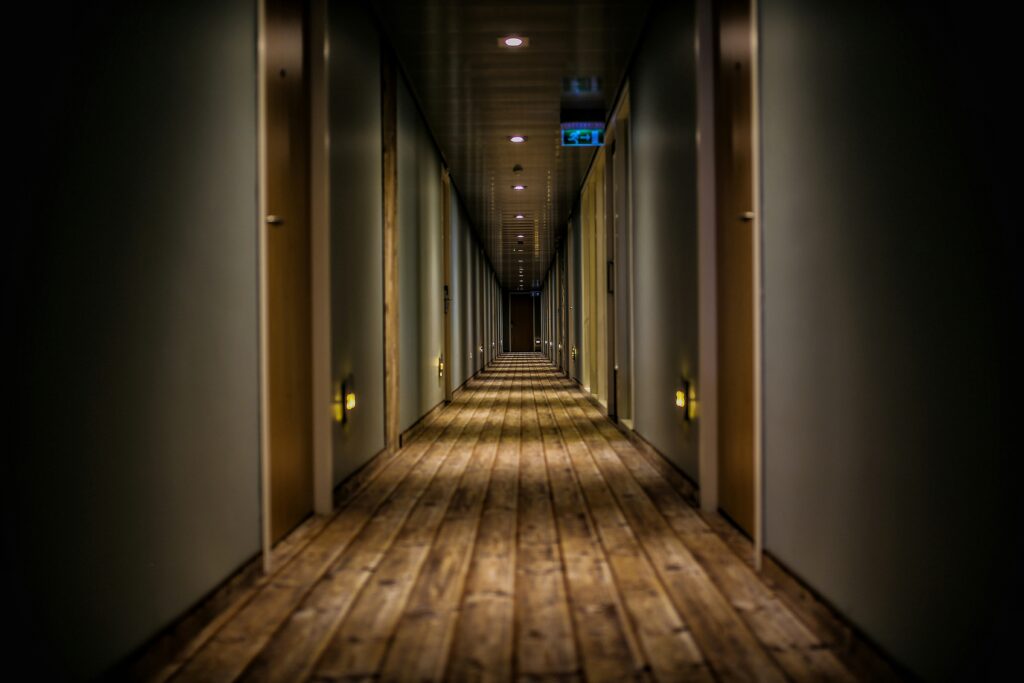Hardwood Floor Installation in Hallways: Challenges and Solutions
Hardwood floor installation in hallways comes with unique challenges. Discover practical solutions, expert tips, and what to expect when installing hardwood floors in narrow spaces.

Let’s talk about something that doesn’t always get the spotlight it deserves—hallways. You know, that narrow stretch connecting rooms, often overlooked when it comes to flooring decisions? But here’s the thing: installing hardwood floors in hallways isn’t just about looks—it’s where craftsmanship meets real-life practicality. And, truth be told, it can get tricky.
Hardwood floor installation in hallways comes with its own little set of puzzles. Tight spaces, tricky cuts, weird transitions, and don’t even get me started on creaky subfloors. Still, when done right, a well-laid hallway floor can completely elevate the feel of your home—polished, warm, and oh-so-cozy underfoot.
Let’s roll up our sleeves and walk through what really goes into laying hardwood flooring in these tight, often high-traffic areas—and how to solve the headaches that might pop up along the way.
Why Hallways Are a Different Beast
You might think, “Flooring is flooring, right?” Not quite. Hallways are like the narrow corridors of a puzzle box. They’re typically long and skinny (sounds familiar?), filled with doorways, nooks, and turns that require more planning than you’d need in a big open space like a living room.
For one, there’s the flow. Hardwood floor installation in hallways isn’t just about plopping planks down—it’s about making sure the grain and direction feel intentional and visually seamless with the rest of your home. Mess that up, and suddenly the floor feels chopped up and awkward.
And let’s not forget movement. Hallways get a lot of foot traffic. Constant. Daily. Sometimes pets skittering, kids running, or guests trudging through in wet shoes. That means your hardwood has to be installed rock solid to handle that kind of wear without shifting or squeaking.
Direction Matters (More Than You’d Think)
One of the most debated questions when installing hardwood floors in hallways is: Which way should the planks run? Sounds simple, but it makes a massive difference.
Here’s the general rule of thumb: run the planks lengthwise down the hallway. It creates the illusion of space, stretches the eye forward, and just feels… right. Running the boards across the hallway can feel a bit choppy or cramped. Like trying to wear your socks sideways. Weird, right?
But sometimes your subfloor or existing layout pushes you in another direction. If you’ve got rooms branching off with perpendicular flooring, transitions need to be smooth—not jarring. That’s where careful planning and maybe even some creative threshold solutions come in.
Dealing With Doorways: The Real Headache
If you’ve ever watched someone install hardwood flooring around door frames and casings, you probably saw some mild frustration—or heard a few colorful words. Why? Because doorways are finicky.
You’ve got to undercut the door jambs so the hardwood can slide underneath, making it look built-in instead of wedged in awkwardly. But getting those cuts just right? Yeah, it takes patience and precision. Mess it up, and you’ll end up with gaps, uneven transitions, or worse—damaged planks.
One tip from the pros: invest in a jamb saw. It’ll save your sanity when you’re trying to install hardwood flooring neatly around those tight corners and trims.
Expansion Gaps: Small but Mighty
Another sneaky issue when laying hardwood floors in a hallway? Forgetting about expansion. Wood isn’t static—it moves. It breathes with humidity and temperature. If you don’t leave enough space for expansion along the edges, your floor could buckle or warp over time. Yikes.
The solution? Always leave a small expansion gap around the perimeter, even in hallways. You can cover it later with baseboards or quarter-round molding. Trust us—future you will thank you.
Subfloor Surprises: What’s Beneath Matters
Let’s face it, what’s under your hardwood is just as important as the hardwood itself. A bumpy, squeaky, or damaged subfloor can mess up even the prettiest planks. Hallways are notorious for being the place where old homes hide their creaky secrets.
Before you even think about laying hardwood floor, check your subfloor. Is it level? Is it dry? Are there squeaks? Fix those issues first. Reinforce any weak spots, nail down loose boards, or add a moisture barrier if needed. It’s a pain, sure—but skipping this step could wreck your floor later.
Cost Factors in Hallway Hardwood Floor Installation
Now, let’s talk money. Installing hardwood floors in a hallway doesn’t always follow the same pricing logic as open areas. You might think a small space equals a small bill—but not so fast.
The labor involved in tight cuts, door transitions, and maneuvering in narrow spaces can drive the cost up. Prices can vary depending on your choice of hardwood, whether you’re going with prefinished or unfinished planks, and how complicated your hallway layout is.
Expect to pay a bit more per square foot than you would in a large room. Why? It just takes more time and detail work. But the payoff—oh man—is worth it when you walk through your hallway and it feels like something out of a design magazine.
Solutions That Save Time (and Stress)
Alright, so now you’re wondering—how do people actually make this easier?
- Pre-planning is everything. Seriously, take time to map out your layout before a single plank hits the floor. It’ll save you from a ton of mid-install regrets.
- Use starter boards wisely. In narrow spaces, your first board sets the tone. Make sure it’s straight and perfectly aligned—or you’ll be playing catch-up with every row after.
- Invest in the right tools. Nail guns, floor staplers, a good saw—all non-negotiable. Borrow, rent, or buy. Just don’t try to wing it with a basic handsaw and a prayer.
- Hire a pro if you’re unsure. Honestly, hallway installations are one of those times where a skilled contractor can be a lifesaver. Especially if your layout is funky or your subfloor is a mess.
Final Thoughts (Not a Conclusion, Promise)
Hardwood floor installation in hallways isn’t just a finishing touch—it’s a statement. It ties your space together and adds that cozy, polished feel that makes a house feel like home. Sure, it’s not without its hiccups—tight spaces, doorway madness, expansion gaps—but with the right approach, it’s all manageable.
If you’re planning to install hardwood flooring yourself, take your time and don’t rush the prep. And if you’re bringing in a pro? Make sure they understand how to handle the unique challenges of hallway spaces. It’s the details that make all the difference.
Because at the end of the day, when you hear that satisfying click of a perfectly installed plank underfoot as you walk through your hallway? Totally worth it.
See for further details by visiting Hardwood Floor Installation Costs: What You Need to Know Before You Start | Robar Flooring
